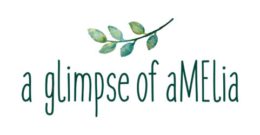Salt Water Pools
A saltwater pool gets cleaned using a filtering system called a salt chlorine generator. The system uses electricity to turn salt into chlorine, which cleans the pool.
Swimming in a saltwater pool may be better for someone who has asthma or allergies. You might notice a strong chlorine smell upon entering a chlorinated indoor pool. That’s because of the chloramines, the mix of chlorine and ammonia. In an outdoor pool, the smell quickly evaporates.
The technical name is [Ectrochemically generated chlorine] often referred to as saltwater pools.
Electrochemically generated chlorine works by passing an electric current through a concentrated salt solution (sodium chloride) to produce hypochlorous acid (HOCl) and hypochlorite ions (OCl−) as the primary oxidants. Studies have shown that when compared to pools disinfected with chlorine, saltwater pools had lower levels of HAAs (dichloroacetic acid and trichloroacetic acid) and trichloroacetaldehyde, but higher levels of Br-DBPs, likely due to bromide impurities in the sodium chloride.
Saltwater pools are gentler on your skin, eyes, hair and clothing. The water is also softer.
Research indicates that saltwater systems may be safer than chlorine pools.
Best – Fresh Ocean pools Saltwater has high levels of saline and potassium which works as a healing agent for any cuts and helps reduce skin irritations and rashes from nappies, eczema and allergies. It is a perfect natural remedy for anyone with sensitive skin! The vitamins and minerals found in saltwater also have an antibiotic and antibacterial effect which help boost the immune system and help reduce and relieve cold and flu symptoms.
Salt water pools contain x10 less salt than the ocean.
TIPS- Rinse off before and after hopping in. Rinsing off not only helps to remove the chemicals that may seep into our skin and hair but washes off sweat and lotions etc which, when mixed with chlorine, can create more chloramines.
https://www.sciencedirect.com/science/article/abs/pii/S0045653500005816
https://www.sciencedirect.com/science/article/abs/pii/S0048969708011443
https://www.sciencedirect.com/science/article/abs/pii/S0048969719304723
https://www.sciencedirect.com/science/article/abs/pii/S0048969717311051
https://academic.oup.com/aje/article/165/2/148/98015

